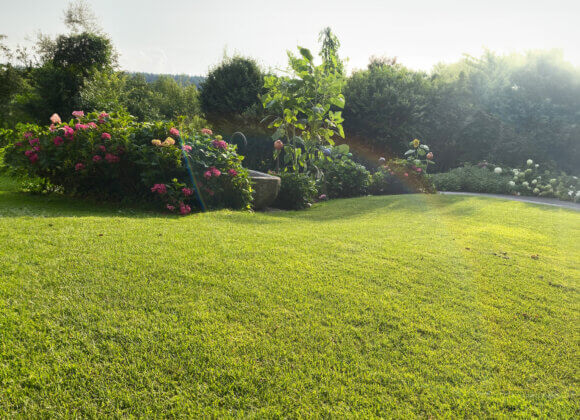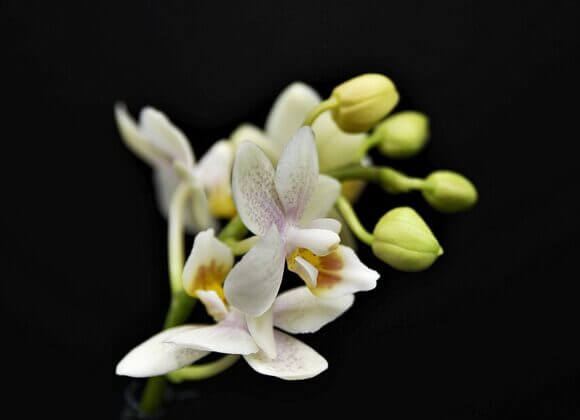September is not just the time for harvesting. It is also the time to start preparing the garden for fall and winter, but also for the coming spring.
Midsummer is over – at least according to the calendar. In the garden, the approaching fall is already making itself felt: Plums, apples, pears and grapes are ripening, and many vegetables are also waiting to be harvested. The lawn needs care after the hot weeks, shrubs and perennials need pruning. Last but not least, you can already set the course for greenery and flowers next spring.
Lawn
The scorching heat, in some places combined with severe drought, has taken its toll on the lawn. To ensure that the brown patches or areas turn green again, you should now provide the lawn with sufficient water on a regular basis. It is better to water less often, but more thoroughly. If you still don’t see fresh green in some areas, reseed. Autumn is also a good time to lay a new lawn. You should also give the green area one last fertilization: Ideally, use special autumn lawn fertilizer to get the lawn through the winter.
Orchard
Now is not only the time for harvesting, but also for care. The harvested, browned canes of summer raspberries are removed after the harvest and newly grown canes are attached to climbing supports. Autumn raspberries, on the other hand, are cut off just above the ground after the last harvest. Old shoots of currants should also be removed now. New fruit trees and soft fruit bushes can or should also be planted soon. Remove fallen fruit regularly to prevent the spread of pests and diseases. Apricot and peach trees can now also be pruned for rejuvenation.

Ornamental garden
Remove yellowed or dead leaves from roses to prevent disease. If you want to plant new roses, you should do so now. The still warm soil will help the plants to grow. This also applies to clematis, which should also be planted now. Collect the seeds of annual flowering plants such as marigolds or cosmea to sow again next spring. Perennials, ground cover plants, hedges and shrubs can also be either transplanted or replanted in September.
Evergreen shrubs, by the way, appreciate a final fertilization with potassium – this helps new shoots to lignify better. September is also the ideal time to plant new flower bulbs in the ground.
Vegetable garden
As with the orchard, the same applies here: Now is the time to harvest. But you can still grow or sow seeds. This applies, for example, to cabbage sprouts, leeks, endive, lettuce, lamb’s lettuce, winter purslane and spinach. Winter onions should also be planted now, as should garlic.
For beds that are no longer planted, green manure is recommended to prepare the soil for the coming year.

Herb garden
Many herbs, especially Mediterranean herbs, are not hardy. You can either try to overwinter them indoors or harvest rosemary, oregano and the like and dry them or put them in oil.
Related posts:
Pest control in the garden without chemicals
Privacy screen in the garden: What is possible, what is allowed?













